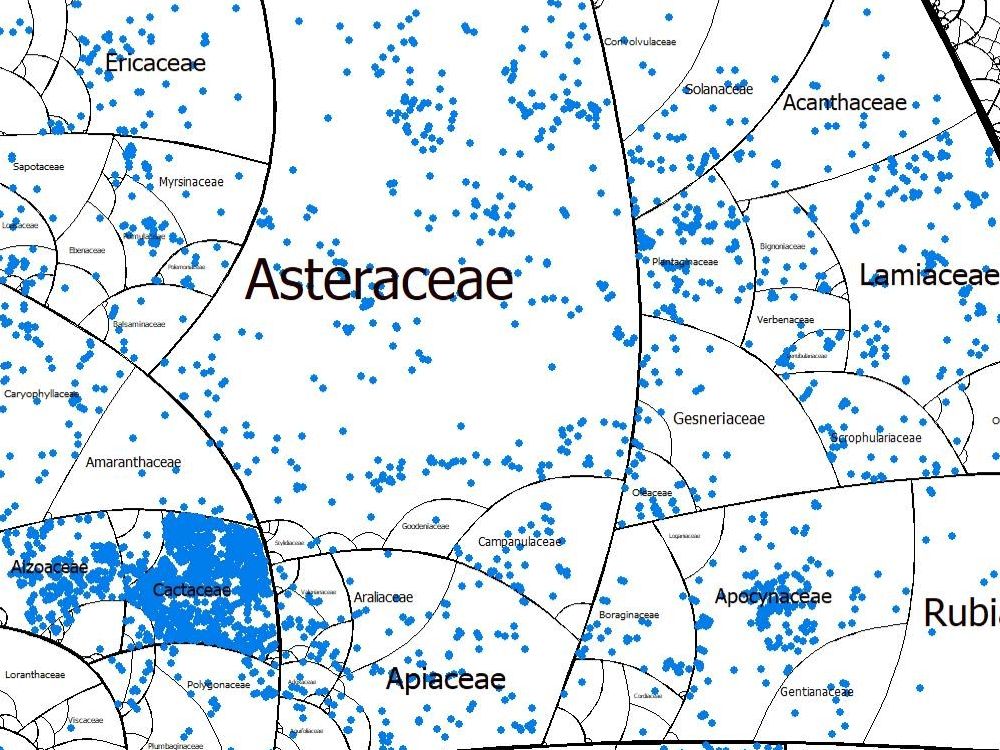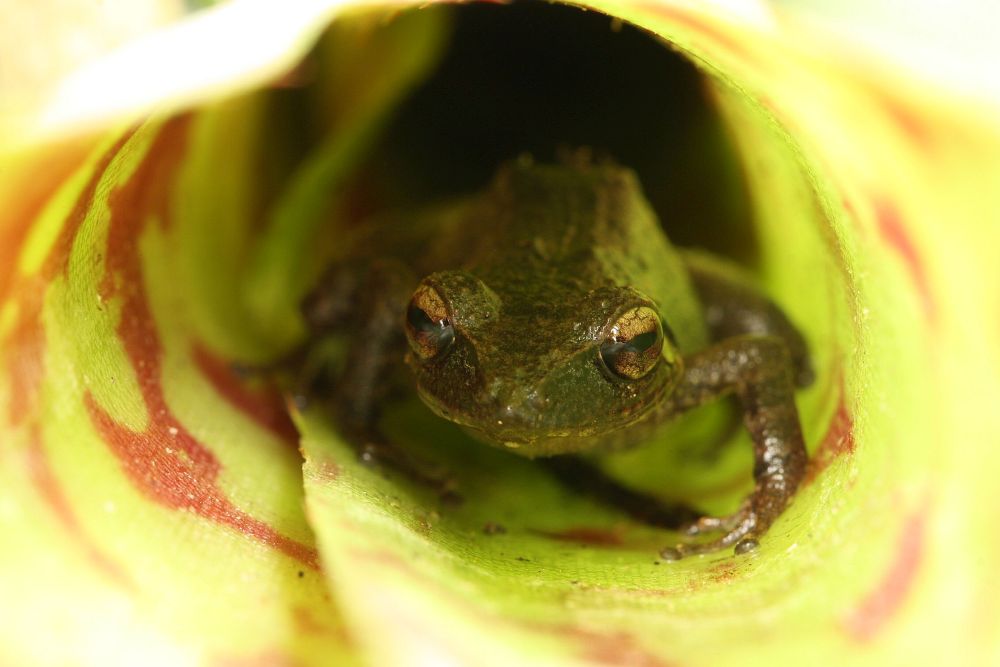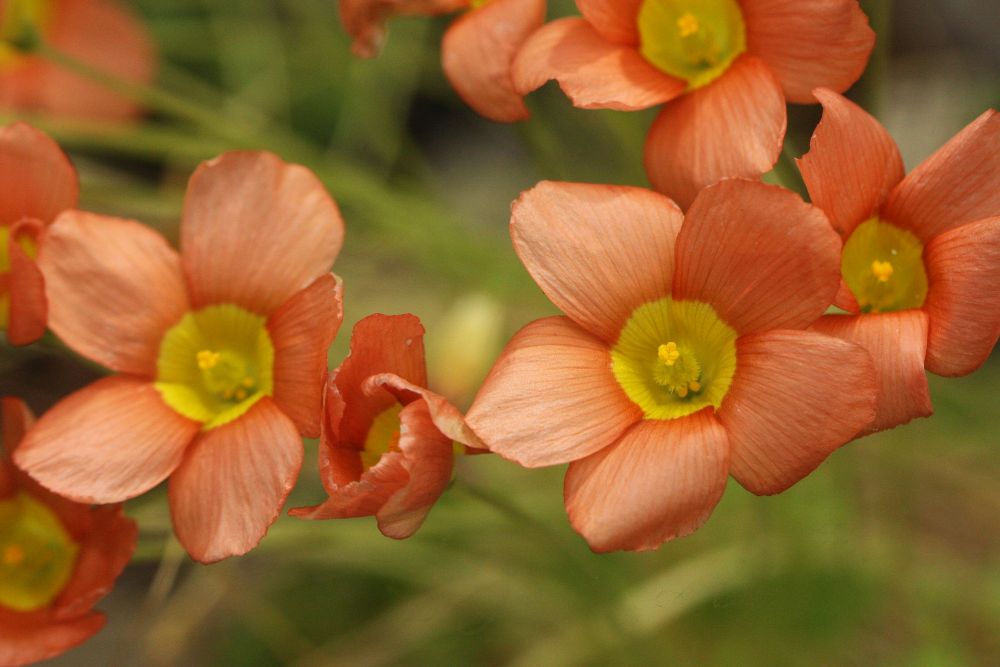Research
The university garden holds a variety of interesting, comprehensive, and scientifically valuable plant collections. We make our collections available for research and collaborate with numerous scientific teams. The following projects are currently or have been recently conducted in our garden:
PiperNET
The goal of this project is to develop new methods for discovering bioactive alkaloids found in plants of the pepper family (Piperaceae) and to clarify their biosynthesis. This could potentially enable large-scale production in the future. The project is being conducted at the Institute of Organic Chemistry and Biochemistry of the Czech Academy of Sciences. The botanical garden provided material in the form of leaves, shoots, and roots of several species of the Piper genus, including an unidentified species collected in Vietnam. Thanks to this study, we may eventually determine what species it is.
Biodiversity of Plants in Central European Botanical Gardens

The aim of a study by Martin Freiberg from the Leipzig Botanical Garden is to find out which groups of plants are well-represented in Central European botanical gardens and which are somewhat neglected.
For the study, we provided data from our plant records and also facilitated collaboration with other botanical gardens in the Czech Republic and Slovakia.
How is the Sex of rain frogs Determined?

The greenhouse of the botanical garden, along with other large greenhouses in Prague, is home to tropical rain frogs of the Eleutherodactylus genus, which are an interesting group for studying the evolution of sex chromosomes. A team of Czech scientists collected samples from our garden as part of a volunteer effort to assist their colleague Wen Juan-Ma from Brussels. The material will be used for cytogenetic and molecular characterization of the sex chromosomes of Eleutherodactylus frogs.
Research on the Oritrophium Genus
Juan Manuel Gorospe Ballesteros is studying the rare plant group Oritrophium (family Asteraceae) as part of two research projects. The first project investigates the relationships within this relatively recently diversified group of plants, with the goal of observing the speciation continuum. The second project focuses on the evolutionary radiation of plants from alpine regions of the tropics, comparing the roles of allopatry, hybridization, and niche differentiation among plants from these areas across continents. In the botanical garden, seeds of four species of the Oritrophium genus were expertly sown, and we are now nurturing about 60 plants intended for this research.
Cytogeography, Reproductive Biology, and Evolution of Andean Plant Groups
Scientists from the Department of Botany at Charles University are participating in a project as part of a strategic partnership between Charles University and the Universidad de Chile, Santiago. The project examines the functional traits of two Caltha species—Caltha sagittata and Caltha appendiculata. It focuses on their life forms, anatomical structure, ploidy (number of chromosome copies), reproductive biology, and ecophysiological constitution. The project seeks to determine whether these traits are adaptive responses to the selective pressures of high-altitude environments and to what extent they are influenced by phylogenetic relationships between species. The research compares evolutionary trends in plants from different geographic regions, specifically tropical (the equatorial Ecuadorian Andes) and temperate (southern Chilean Andes) zones.
In the botanical garden, we are cultivating several specimens of both Caltha species from various locations ranging from Ecuador to southern Chile for this project.
Research on the Oxalis genus

Our unique collection of South African wood-sorrels (genus Oxalis) has been the subject of various studies over the past few years, conducted by the Department of Botany and the Czech Academy of Sciences (CAS). In 2023, it was part of two research projects, and three academic papers are currently in preparation. The projects are being carried out under the auspices of the CAS in Třeboň.
The first project, led by F. Curtis Lubbe from the Department of Experimental and Functional Morphology at the CAS Institute of Botany, examines the characteristics and growth strategies of tuberous South African oxalis species. The aim is to gain a deeper understanding of diversification, resource allocation, the role of ploidy levels and strategies for underground spatial allocation.
The second project is headed by Lars Götzenberger from the Department of Functional Ecology at the CAS Institute of Botany. It focuses on floral economics in South African wood sorrels, investigating growth relationships between flowers and leaves and revealing their structural and lifespan limits.
Perennial Growth Season Length
A team from the Department of Botany at Charles University is conducting research based on data collected in the botanical garden, focusing on the ecological factors governing intraspecific differences in the growth seasons of temperate perennials. Perennials aim to optimize favorable conditions while avoiding tissue loss in adverse conditions. More details can be found in the published scientific article here:
T. Koubek, T. Mašková & T. Herben: Determinants of interspecific variation in season length of perennial herbs, Annals of Botany, Volume 132, Issue 2, July 25, 2023, Pages 281–291
https://doi.org/10.1093/aob/mcad088
Historical Medicinals
The botanical garden provided samples of juniper fruits and wood for use in a thesis titled Composition and Degradation of Medicinal Remains from the 18th–20th Centuries. This research analyzes remnants of medicinal products from the Prague Capuchin pharmacy, which are now owned by the National Museum in Prague, and compares them with contemporary samples.
